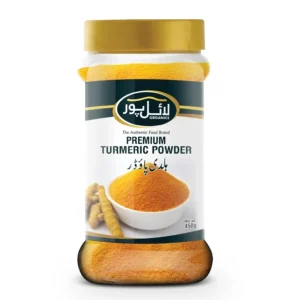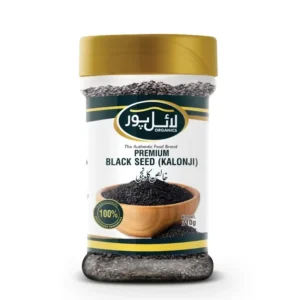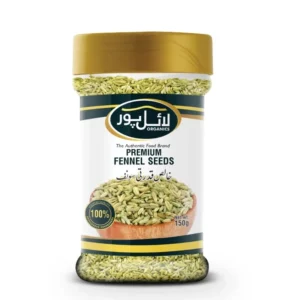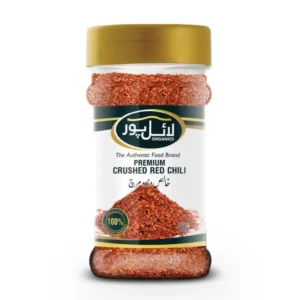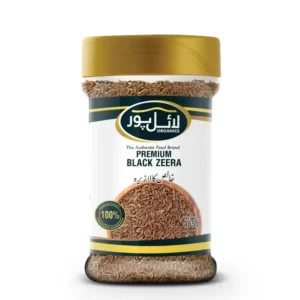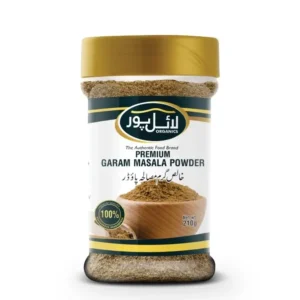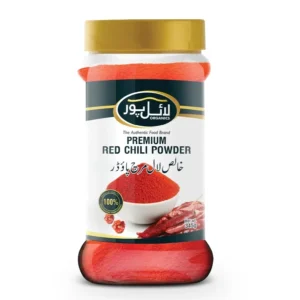Lyallpur Organics Premium Whole Turmeric (Sabit Haldi) – 100% Natural Organic & Pure | Rich in Antioxidants & Flavor | Perfect for Cooking & Health Benefits
Turmeric, a golden spice derived from the Curcuma longa plant’s root, offers many potential turmeric benefits for men. This versatile spice boasts a warm, earthy flavour and enhances dishes from curries to beverages. It is also a treasure trove of bioactive compounds, most notably curcumin, known for its antioxidant and anti-inflammatory properties.
History and Origin of Turmeric
Exploring the history and origin of turmeric, we find its story beginning nearly 4,000 years ago in the Vedic culture of India, where it was used as both a spice and a sacred herb. It was used in Ayurvedic medicine to treat various ailments. It found its way into traditional Chinese medicine as it spread throughout Asia. Turmeric’s journey continued, reaching Europe through Arab traders and eventually the Americas, solidifying its global presence. Modern science continues to validate turmeric’s traditional uses and uncover new potential health benefits, making it a cherished ingredient in kitchens and medicine cabinets worldwide.

Our Top Selling Turmeric Product
Nutritional and Health Benefits

Fights Inflammation: Turmeric’s anti-inflammatory properties can help manage arthritis and promote overall well-being.
Protects Against Damage: Its antioxidant effects shield cells from harm, potentially reducing the risk of chronic diseases.
Soothes Digestion: Turmeric has traditionally been used to support digestive health and ease discomfort.
Enhances Immunity: Research suggests it may boost your body’s natural defenses against illness.
Radiant Skin: Turmeric powder for skin is used in face masks and treatments to brighten skin and combat acne.
Healthier Hair: It may promote scalp health and even stimulate hair growth.
Supports Brain Health: Improves memory and cognitive function.
Promotes Heart Health: Contributes to a healthier cardiovascular system.
Mood Booster: Has the Potential mood-enhancing effects.
Protects Against Damage: Its antioxidant effects shield cells from harm, potentially reducing the risk of chronic diseases.
Soothes Digestion: Turmeric has traditionally been used to support digestive health and ease discomfort.
Enhances Immunity: Research suggests it may boost your body’s natural defenses against illness.
Radiant Skin: Turmeric powder for skin is used in face masks and treatments to brighten skin and combat acne.
Healthier Hair: It may promote scalp health and even stimulate hair growth.
Supports Brain Health: Improves memory and cognitive function.
Promotes Heart Health: Contributes to a healthier cardiovascular system.
Mood Booster: Has the Potential mood-enhancing effects.
Turmeric Varieties: Beyond the Golden Spice

Madras
Grown primarily in Tamil Nadu, this variety has a bright yellow and pungent flavor. It’s a staple in Indian curries and lentil stews, though it contains less curcumin than other varieties.
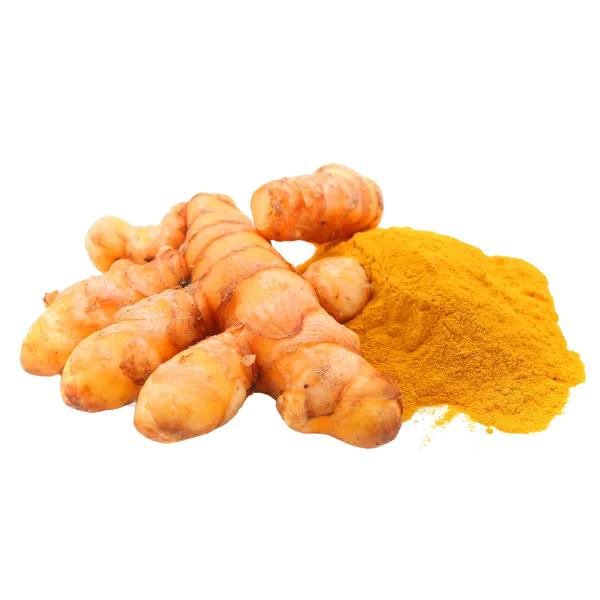
Alleppey
It is known for its deep orange color and earthy flavor. With higher curcumin content than Madras turmeric, it’s often used in Ayurvedic medicine for its potential anti-inflammatory benefits.
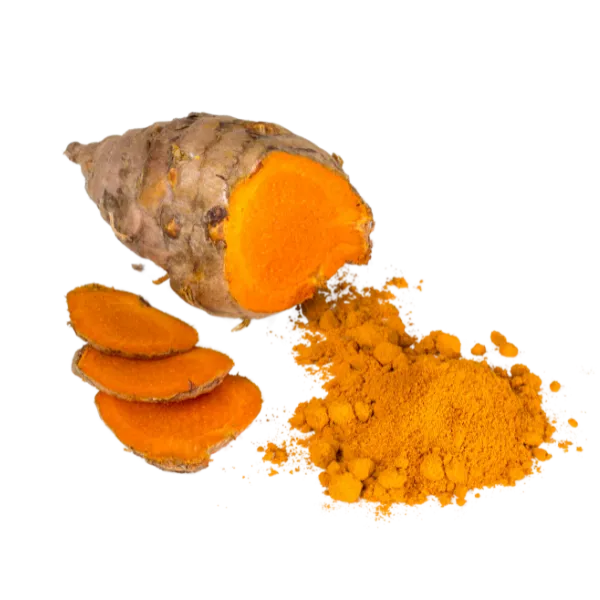
Lakadong
This Meghalaya variety is considered one of the best globally due to its exceptionally high curcumin content (7-12%). Its vibrant color and strong flavor make it ideal for cooking.

Kasturi
Also known as Curcuma aromatica, this variety is cultivated for its aromatic fragrance and is used in cosmetics, perfumes, and traditional medicine. It’s believed to have skin-soothing properties but isn’t used in cooking due to its bitter taste.

Kali Haldi
This rare variety, Kali Haldi, has a dark color and pungent flavor. Used in traditional medicine for potential pain relief, anti-inflammatory effects, and blood sugar regulation, it’s gaining recognition for its unique properties.
The Spice in Many Forms
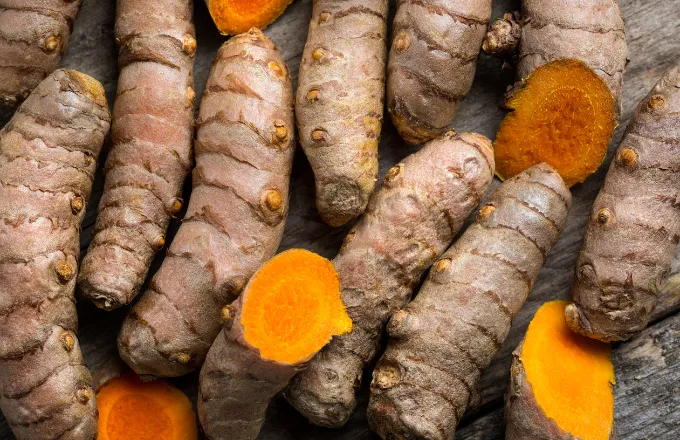
Fresh Root
This looks like ginger and has a bright orange-yellow color inside. It tastes a little earthy and peppery. You can grate it, slice it, or even juice it. It’s great in curries, stir-fries, and drinks. This form has the most curcumin, the good stuff that helps your body.

Turmeric Powder
This is the most common form of turmeric, made by drying and grinding the root. It has a warm, earthy taste and a beautiful golden color. You can add it to curries, spice mixes, and marinades. It’s also good in turmeric smoothies, soups, and rice dishes.

Paste
This is made by mixing turmeric powder with water or oil, sometimes adding other spices like ginger and black pepper. People use it for health reasons, such as putting it on their skin or mixing it with warm milk to drink. It’s known for helping with inflammation and healing.
Culinary Uses of Turmeric
The warm, earthy flavor and vibrant golden hue make it a cherished ingredient in cuisines worldwide. In India and South Asia, it is a staple in curries, adding depth and complexity to flavors in stews, lentil dishes, and rice preparations.
It is a key component of many spice blends, such as curry powder and garam masala. It is used to create the signature taste of various regional dishes. In the Middle East, turmeric finds its way into rice dishes and tagines, infusing them with warm, earthy notes.
As its popularity grows, it is increasingly incorporated into Western cuisines. It adds a vibrant touch to smoothies, lattes, and soups and even finds its way into desserts for a unique twist. Its versatility allows it to be used fresh, dried, or powdered, making it a convenient and valuable addition to kitchens worldwide.
Turmeric’s culinary influence extends far beyond Asia and the Middle East. Its vibrant color and distinctive flavor enhance stews and sauces in certain African cuisines, adding depth and warmth to traditional dishes. Similarly, in the Caribbean, It is occasionally incorporated into curries and rice dishes, contributing to its unique flavor profile and enhancing the visual appeal of these savory creations.
It is a key component of many spice blends, such as curry powder and garam masala. It is used to create the signature taste of various regional dishes. In the Middle East, turmeric finds its way into rice dishes and tagines, infusing them with warm, earthy notes.
As its popularity grows, it is increasingly incorporated into Western cuisines. It adds a vibrant touch to smoothies, lattes, and soups and even finds its way into desserts for a unique twist. Its versatility allows it to be used fresh, dried, or powdered, making it a convenient and valuable addition to kitchens worldwide.
Turmeric’s culinary influence extends far beyond Asia and the Middle East. Its vibrant color and distinctive flavor enhance stews and sauces in certain African cuisines, adding depth and warmth to traditional dishes. Similarly, in the Caribbean, It is occasionally incorporated into curries and rice dishes, contributing to its unique flavor profile and enhancing the visual appeal of these savory creations.
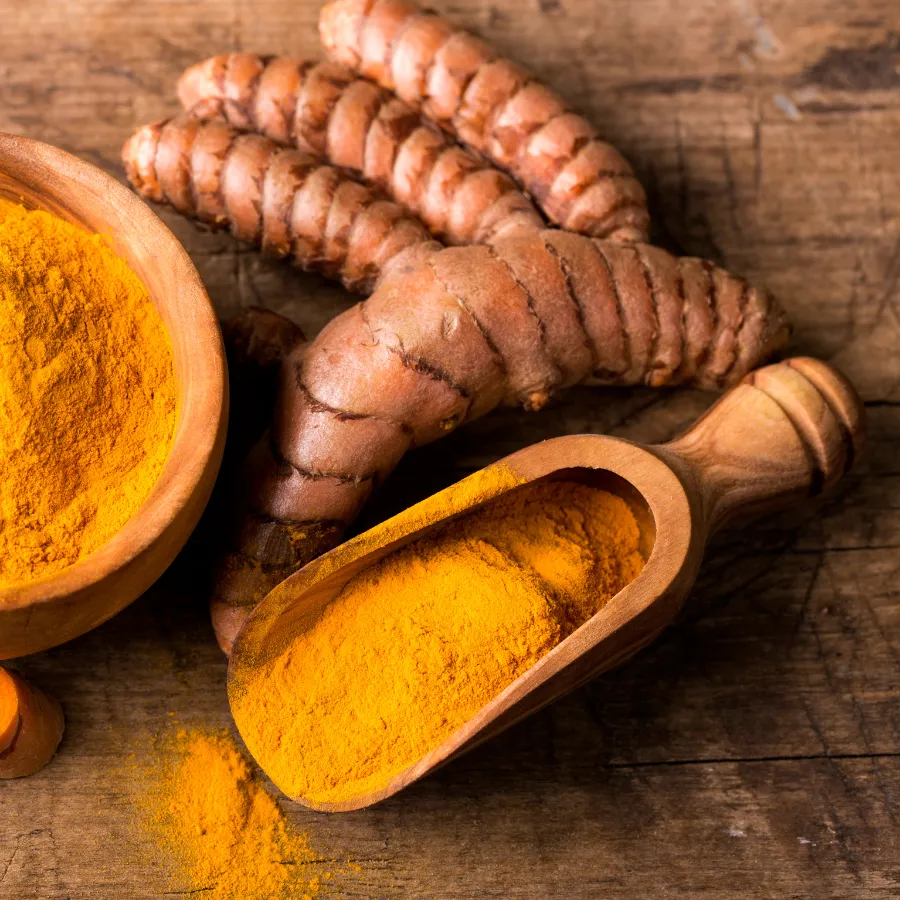
A Culinary Exploration

Indian Cuisine
Turmeric’s golden hue and earthy flavor have become synonymous with Indian cuisine. It’s a cornerstone ingredient in many dishes, from fragrant and complex curries to hearty lentil stews known as dals. Its vibrant color transforms ordinary rice into a festive dish, while its warmth and depth of flavor enhance vegetable stir-fries and braised dishes. Even in snacks and appetizers like pakoras and samosas, It plays a key role, adding a unique flavor dimension. It is also felt in dipping sauces and chutneys, completing the Indian culinary experience.

Thai Cuisine
In the vibrant culinary landscape of Thailand, it finds a home in the beloved yellow curries, imparting its signature color and a subtle earthy flavor. These creamy, fragrant curries are a testament to turmeric’s versatility and ability to complement a variety of ingredients. It also makes its way into Thai soups, adding a warm, golden glow and a delicate earthy note that enhances the overall flavor profile. Additionally, it is often used as a seasoning in stir-fries, where it lends depth and complexity to dishes featuring vegetables, noodles, or meat.

Middle Eastern Cuisine
Across the Middle East, it is celebrated for its versatility and ability to enhance flavor and visual appeal. It prominently features the renowned spice blend Ras el Hanout, a fragrant mixture used to flavor various dishes, including tagines, stews, and rice. It also infuses rice with a delicate golden hue and subtle warmth, making it a visually appealing and aromatic accompaniment to various meals. Furthermore, it is occasionally used as a marinade or seasoning for grilled or roasted meats, imparting a subtle earthy flavor and a hint of golden color.
Turmeric Cultivation: Climate, Soil, and Planting Techniques
Turmeric thrives in warm and humid weather, making tropical and subtropical regions ideal for growth. It prefers temperatures between 68°F to 95°F (20°C to 35°C) and shouldn’t be exposed to frost. Well-draining soil is crucial, so opt for sandy loam or loamy soil mixed with compost. The ideal soil pH is slightly acidic to neutral, ranging from 6.0 to 7.5.
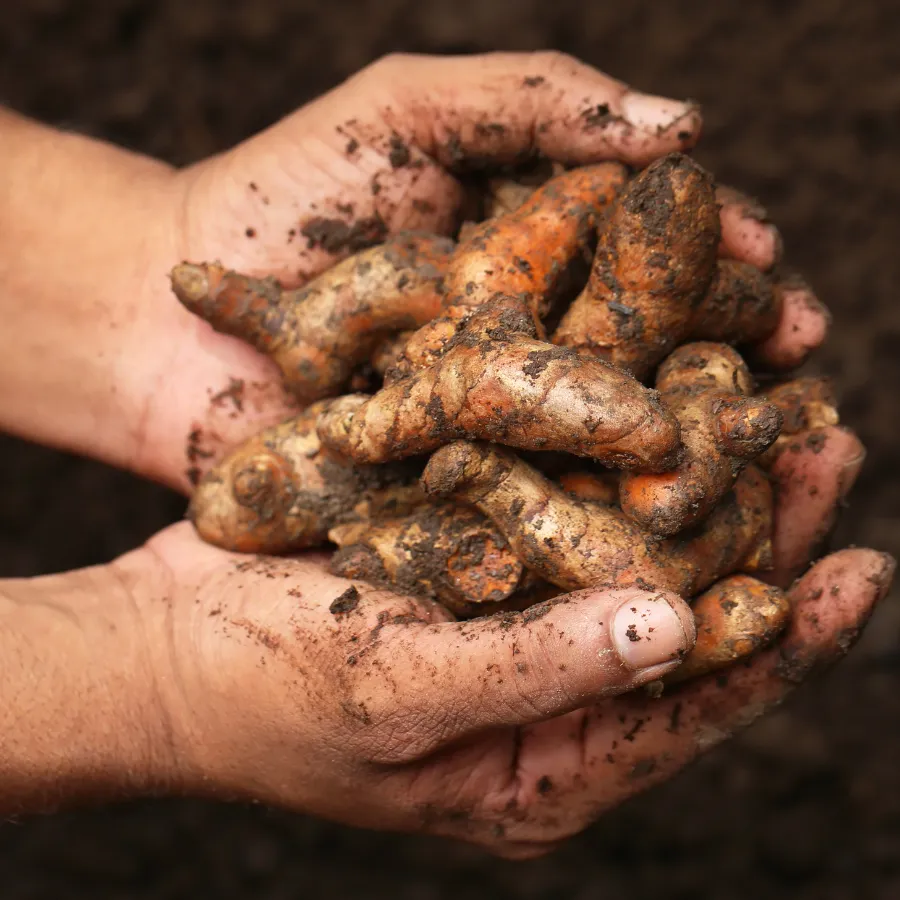
Planting is relatively straightforward. During springtime, after the last frost has passed, bury the rhizomes (roots) 2-3 inches deep and space them 12-18 inches apart. After 8-10 months of growth, the plant leaves will turn yellow, signaling it’s time for harvesting turmeric. Dig up the entire plant, carefully separate the rhizomes from the stem, wash them thoroughly, and allow them to dry in a warm, well-ventilated area. Once cured, you can store the rhizomes whole or process them into powder or paste for various culinary and medicinal uses.
This spice’s versatility extends beyond its adaptability to different growing environments. It can be cultivated on large-scale farms using specialized techniques, but it’s also well-suited for home gardens and small plots. To give your plants a helping hand, mulch the soil around them to retain moisture and suppress weed growth. Keep an eye out for pests and diseases that might harm your plants, and practice crop rotation by planting in a different location each year. This helps to maintain soil health and prevent the buildup of diseases.
This spice’s versatility extends beyond its adaptability to different growing environments. It can be cultivated on large-scale farms using specialized techniques, but it’s also well-suited for home gardens and small plots. To give your plants a helping hand, mulch the soil around them to retain moisture and suppress weed growth. Keep an eye out for pests and diseases that might harm your plants, and practice crop rotation by planting in a different location each year. This helps to maintain soil health and prevent the buildup of diseases.
Other Top Products By Lyallpur Organics
100% Natural Organic & Pure
Perfect for Cooking & Health Benefits
Lyallpur Organics
Premium Whole Turmeric (Sabit Haldi)
Turmeric, a golden spice derived from the Curcuma longa plant’s root, offers many potential turmeric benefits for men. This versatile spice boasts a warm, earthy flavour and enhances dishes from curries to beverages. It is also a treasure trove of bioactive compounds, most notably curcumin, known for its antioxidant and anti-inflammatory properties.

History
History and Origin of Turmeric
Exploring the history and origin of turmeric, we find its story beginning nearly 4,000 years ago in the Vedic culture of India, where it was used as both a spice and a sacred herb. It was used in Ayurvedic medicine to treat various ailments. It found its way into traditional Chinese medicine as it spread throughout Asia. Turmeric’s journey continued, reaching Europe through Arab traders and eventually the Americas, solidifying its global presence. Modern science continues to validate turmeric’s traditional uses and uncover new potential health benefits, making it a cherished ingredient in kitchens and medicine cabinets worldwide.
Benefits
Nutritional and Health Benefits
Fights Inflammation
Turmeric’s anti-inflammatory properties can help manage arthritis and promote overall well-being.
Protects Against Damage
Its antioxidant effects shield cells from harm, potentially reducing the risk of chronic diseases.
Soothes Digestion
Turmeric has traditionally been used to support digestive health and ease discomfort.
Enhances Immunity
Research suggests it may boost your body’s natural defenses against illness.
Radiant Skin
Healthier Hair
It may promote scalp health and even stimulate hair growth.
Supports Brain Health
Promotes Heart Health
Contributes to a healthier cardiovascular system.
Turmeric Varieties
Beyond the Golden Spice

Madras
Grown primarily in Tamil Nadu, this variety has a bright yellow and pungent flavor. It’s a staple in Indian curries and lentil stews, though it contains less curcumin than other varieties.

Alleppey
It is known for its deep orange color and earthy flavor. With higher curcumin content than Madras turmeric, it’s often used in Ayurvedic medicine for its potential anti-inflammatory benefits.

Lakadong
This Meghalaya variety is considered one of the best globally due to its exceptionally high curcumin content (7-12%). Its vibrant color and strong flavor make it ideal for cooking.

Lakadong
This Meghalaya variety is considered one of the best globally due to its exceptionally high curcumin content (7-12%). Its vibrant color and strong flavor make it ideal for cooking.

Lakadong
This Meghalaya variety is considered one of the best globally due to its exceptionally high curcumin content (7-12%). Its vibrant color and strong flavor make it ideal for cooking.
Form of Turmeric
The Spice in Many Forms

Fresh Root
This looks like ginger and has a bright orange-yellow color inside. It tastes a little earthy and peppery. You can grate it, slice it, or even juice it. It’s great in curries, stir-fries, and drinks. This form has the most curcumin, the good stuff that helps your body.

Fresh Root
This looks like ginger and has a bright orange-yellow color inside. It tastes a little earthy and peppery. You can grate it, slice it, or even juice it. It’s great in curries, stir-fries, and drinks. This form has the most curcumin, the good stuff that helps your body.

Fresh Root
This looks like ginger and has a bright orange-yellow color inside. It tastes a little earthy and peppery. You can grate it, slice it, or even juice it. It’s great in curries, stir-fries, and drinks. This form has the most curcumin, the good stuff that helps your body.
Culinary Uses of Turmeric
The warm, earthy flavor and vibrant golden hue make it a cherished ingredient in cuisines worldwide. In India and South Asia, it is a staple in curries, adding depth and complexity to flavors in stews, lentil dishes, and rice preparations.
It is a key component of many spice blends, such as curry powder and garam masala. It is used to create the signature taste of various regional dishes. In the Middle East, turmeric finds its way into rice dishes and tagines, infusing them with warm, earthy notes.
As its popularity grows, it is increasingly incorporated into Western cuisines. It adds a vibrant touch to smoothies, lattes, and soups and even finds its way into desserts for a unique twist. Its versatility allows it to be used fresh, dried, or powdered, making it a convenient and valuable addition to kitchens worldwide.
Turmeric’s culinary influence extends far beyond Asia and the Middle East. Its vibrant color and distinctive flavor enhance stews and sauces in certain African cuisines, adding depth and warmth to traditional dishes. Similarly, in the Caribbean, It is occasionally incorporated into curries and rice dishes, contributing to its unique flavor profile and enhancing the visual appeal of these savory creations.
It is a key component of many spice blends, such as curry powder and garam masala. It is used to create the signature taste of various regional dishes. In the Middle East, turmeric finds its way into rice dishes and tagines, infusing them with warm, earthy notes.
As its popularity grows, it is increasingly incorporated into Western cuisines. It adds a vibrant touch to smoothies, lattes, and soups and even finds its way into desserts for a unique twist. Its versatility allows it to be used fresh, dried, or powdered, making it a convenient and valuable addition to kitchens worldwide.
Turmeric’s culinary influence extends far beyond Asia and the Middle East. Its vibrant color and distinctive flavor enhance stews and sauces in certain African cuisines, adding depth and warmth to traditional dishes. Similarly, in the Caribbean, It is occasionally incorporated into curries and rice dishes, contributing to its unique flavor profile and enhancing the visual appeal of these savory creations.

Explore
A Culinary Exploration

Indian Cuisine
Turmeric’s golden hue and earthy flavor have become synonymous with Indian cuisine. It’s a cornerstone ingredient in many dishes, from fragrant and complex curries to hearty lentil stews known as dals. Its vibrant color transforms ordinary rice into a festive dish, while its warmth and depth of flavor enhance vegetable stir-fries and braised dishes. Even in snacks and appetizers like pakoras and samosas, It plays a key role, adding a unique flavor dimension. It is also felt in dipping sauces and chutneys, completing the Indian culinary experience.

Thai Cuisine
In the vibrant culinary landscape of Thailand, it finds a home in the beloved yellow curries, imparting its signature color and a subtle earthy flavor. These creamy, fragrant curries are a testament to turmeric’s versatility and ability to complement a variety of ingredients. It also makes its way into Thai soups, adding a warm, golden glow and a delicate earthy note that enhances the overall flavor profile. Additionally, it is often used as a seasoning in stir-fries, where it lends depth and complexity to dishes featuring vegetables, noodles, or meat.

Middle Eastern Cuisine
Across the Middle East, it is celebrated for its versatility and ability to enhance flavor and visual appeal. It prominently features the renowned spice blend Ras el Hanout, a fragrant mixture used to flavor various dishes, including tagines, stews, and rice. It also infuses rice with a delicate golden hue and subtle warmth, making it a visually appealing and aromatic accompaniment to various meals. Furthermore, it is occasionally used as a marinade or seasoning for grilled or roasted meats, imparting a subtle earthy flavor and a hint of golden color.
Turmeric Cultivation:
Climate, Soil, and Planting Techniques
Turmeric thrives in warm and humid weather, making tropical and subtropical regions ideal for growth. It prefers temperatures between 68°F to 95°F (20°C to 35°C) and shouldn’t be exposed to frost. Well-draining soil is crucial, so opt for sandy loam or loamy soil mixed with compost. The ideal soil pH is slightly acidic to neutral, ranging from 6.0 to 7.5.
Planting is relatively straightforward. During springtime, after the last frost has passed, bury the rhizomes (roots) 2-3 inches deep and space them 12-18 inches apart. After 8-10 months of growth, the plant leaves will turn yellow, signaling it’s time for harvesting turmeric. Dig up the entire plant, carefully separate the rhizomes from the stem, wash them thoroughly, and allow them to dry in a warm, well-ventilated area. Once cured, you can store the rhizomes whole or process them into powder or paste for various culinary and medicinal uses.
This spice’s versatility extends beyond its adaptability to different growing environments. It can be cultivated on large-scale farms using specialized techniques, but it’s also well-suited for home gardens and small plots. To give your plants a helping hand, mulch the soil around them to retain moisture and suppress weed growth. Keep an eye out for pests and diseases that might harm your plants, and practice crop rotation by planting in a different location each year. This helps to maintain soil health and prevent the buildup of diseases.
Planting is relatively straightforward. During springtime, after the last frost has passed, bury the rhizomes (roots) 2-3 inches deep and space them 12-18 inches apart. After 8-10 months of growth, the plant leaves will turn yellow, signaling it’s time for harvesting turmeric. Dig up the entire plant, carefully separate the rhizomes from the stem, wash them thoroughly, and allow them to dry in a warm, well-ventilated area. Once cured, you can store the rhizomes whole or process them into powder or paste for various culinary and medicinal uses.
This spice’s versatility extends beyond its adaptability to different growing environments. It can be cultivated on large-scale farms using specialized techniques, but it’s also well-suited for home gardens and small plots. To give your plants a helping hand, mulch the soil around them to retain moisture and suppress weed growth. Keep an eye out for pests and diseases that might harm your plants, and practice crop rotation by planting in a different location each year. This helps to maintain soil health and prevent the buildup of diseases.


